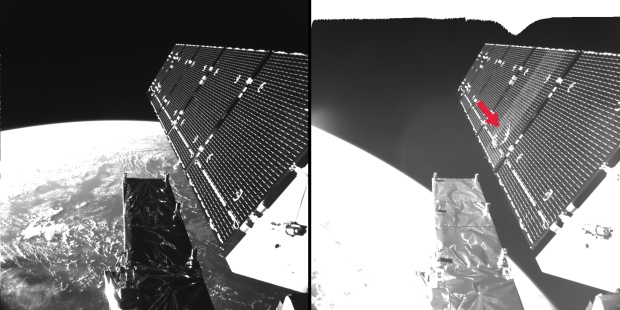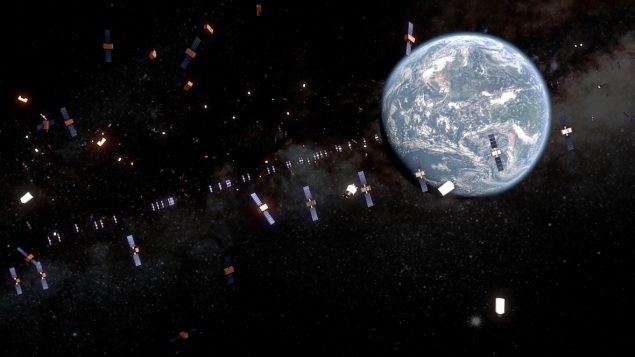Space junk has been accumulating since the launch of Sputnik, the first satellite, over 60 years ago.
With more than 5,000 rockets launched since, there’s a lot of debris now orbiting the earth.
60,000 pieces of space junk
Andrew Fazekas, aka The Night Sky Guy, is a science writer and author of, Star Trek the Official Guide to Our Universe: The True Science Behind the Starship Voyages.
“There are built in life-times for satellites, so some last for five, ten, twenty years, the circuit boards can fry up, there’s a limit to battery life,” Fazekas explains.
He says, “NORAD actually uses their radar system and it’s tracking nearly 60,000 pieces of space junk that are at least the size of a basketball.”
There have been occasions when the International Space Station (ISS) has had to move to get out of the way.
But even the astronauts on the Space Station have contributed, losing tools, or bolts while on the outside of the ISS doing repairs.
ListenAnd satellite collisions are particularly dangerous as the cloud of debris creates thousands of shards of metal. “This just adds to the cosmic mess” Fazekas says.

- On Aug. 23, 2016, ESA engineers discovered that their Copernicus Sentinel-1A satellite was damaged by a millimetre-sized particle. The image on the left shows the solar panel before the impact, while the image on the right (red arrow) shows the damage it sustained. (ESA/CBC)
“Some experts say it’s much worse when we look at even smaller objects, things that are maybe half-an-inch wide or a few centimetres across, the numbers explode to probably more like over a million.”
The launch last week of two Space X satellites is about to compound the problem, exponentially.
Constellation network
The beginning of a constellation network, or a ring of about 4,500 satellites around the earth, will provide broadband internet service to the most remote regions on earth, but they will also increase the dangers associated with space junk.
“Space X is just only one company of many that have plans of deploying more satellites to provide internet services, even Telesat Canada is looking to put up at least 100 or more satellites for telecommunication purposes.” Fazekas says.
And with all the increase in hardware, there is still no solution to the challenge of managing or disposing of, space junk.
Andrew Fazekas says there are plans.
“There are groups of scientists in the different major space agencies, like the Canadian Space Agency, the European Space Agency and NASA, there are teams working on developing systems that will be able to basically be cosmic trash collectors, using robotic arms for instance or shooting out harpoons to capture satellites, and the idea would be to drag them back into the atmosphere of the earth so they would burn up safely over a very remote ocean,” he says.

Astronaut Tim Peake took this photo from inside Cupola in 2016, showing a 7-mm diameter chip caused by the impact from a tiny piece of space debris, possibly a paint flake or small metal fragment no bigger than a few thousandths of a millimetre. (ESA/NASA/CBC)
Many satellite manufacturers are now building in pro-active thrusters on board so they still have full control and they can have a controlled entry into the atmosphere when they want. But this is generally for the larger satellites.
Tiangong 1 falling
Many people still recall the drama in 1979 when pieces of the Skylab fell to earth, with major pieces landing in the Australian outback.
There’s global concern these days with China’s Tiangong 1, an experimental space station that was decommissioned and is expected to fall sometime in March.
It is now “tumbling uncontrolled in orbit around the earth, and the expectations are in the next few months it will enter the atmosphere and hopefully most of it will burn up but we do think that some fragments will make it to the ground and concerns are where and when will that exactly happen no one knows for sure,” Andrew Fazekas explains.
So far, no one has been injured by space debris.
(With files from CBC)







For reasons beyond our control, and for an undetermined period of time, our comment section is now closed. However, our social networks remain open to your contributions.